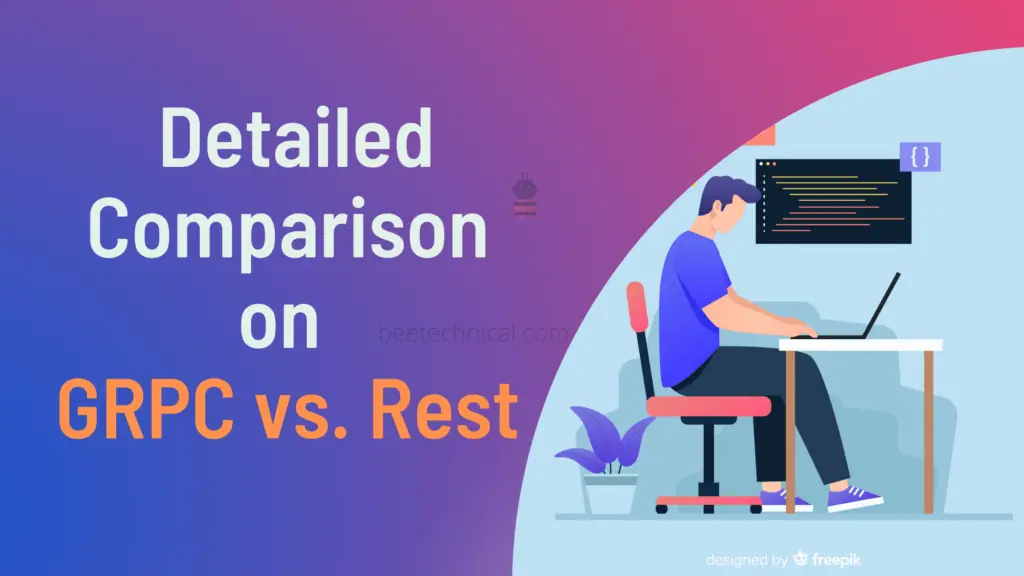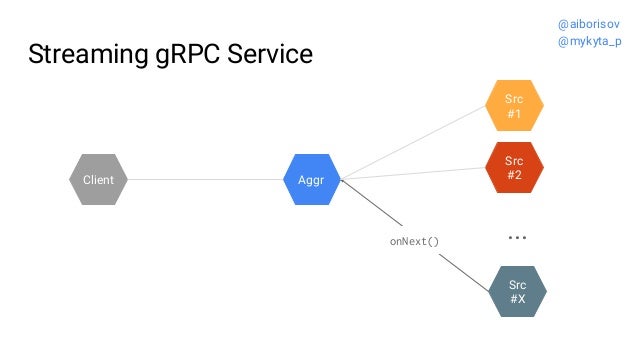
Client streaming RPC: client sends multiple messages and the server replies with one response message.  Server Streaming RPC: a single request and message followed by multiple response messages. Simple RPC: a single request and a single response in the communication. In this way HTTP /2 multiplex the messages, and enables the following communication patterns: During the interaction, the client and server break down the message into frames, interleave them, and then reassemble them on the other side. The request message is always triggered by the client. Message: a complete sequence of frames that map to a logical HTTP message that consists of one or more frames. Each frame contains a frame header, which at a minimum identifies the stream to which the frame belongs. Frame: the smallest unit of communication in HTTP/2. Stream: a bidirectional flow of bytes within an established connection. In HTTP/2, the key concepts to understand are: This makes gRPC a high-performance RPC framework. One of the important difference with HTTP/2, is that all communication between a client and server is performed over a single TCP connection that can carry any number of bidirectional flows of bytes. A thorough discussion on the differences between the two HTTP versions is beyond what this post can cover. This post is a good rundown of the difference between HTTP /2 and HTTP /1.1, which account for many of the advantages of gRPC. It overcomes some issues with HTTP/1.1 on security, speed, etc. HTTP/2 is the second major version of HTTP. gRPC on the other hand, operates on HTTP /2, and thereby inherits many advantages from it. GraphQL operates on HTTP and we can view it as a layer on top of REST in a broad sense. gRPC and GraphQL emerged to address different challenges with REST. RESTful services are quite bulky, inefficient, and error-prone. There is no enforcement on the format of the payload either. You can choose to use OpenAPI/Swagger specification to define types but it is still not tightly integrated. For example, the interface between REST client and server is not strongly typed. To emulate a web request in REST, one can use curl, a common utility to emulate any HTTP client.
Server Streaming RPC: a single request and message followed by multiple response messages. Simple RPC: a single request and a single response in the communication. In this way HTTP /2 multiplex the messages, and enables the following communication patterns: During the interaction, the client and server break down the message into frames, interleave them, and then reassemble them on the other side. The request message is always triggered by the client. Message: a complete sequence of frames that map to a logical HTTP message that consists of one or more frames. Each frame contains a frame header, which at a minimum identifies the stream to which the frame belongs. Frame: the smallest unit of communication in HTTP/2. Stream: a bidirectional flow of bytes within an established connection. In HTTP/2, the key concepts to understand are: This makes gRPC a high-performance RPC framework. One of the important difference with HTTP/2, is that all communication between a client and server is performed over a single TCP connection that can carry any number of bidirectional flows of bytes. A thorough discussion on the differences between the two HTTP versions is beyond what this post can cover. This post is a good rundown of the difference between HTTP /2 and HTTP /1.1, which account for many of the advantages of gRPC. It overcomes some issues with HTTP/1.1 on security, speed, etc. HTTP/2 is the second major version of HTTP. gRPC on the other hand, operates on HTTP /2, and thereby inherits many advantages from it. GraphQL operates on HTTP and we can view it as a layer on top of REST in a broad sense. gRPC and GraphQL emerged to address different challenges with REST. RESTful services are quite bulky, inefficient, and error-prone. There is no enforcement on the format of the payload either. You can choose to use OpenAPI/Swagger specification to define types but it is still not tightly integrated. For example, the interface between REST client and server is not strongly typed. To emulate a web request in REST, one can use curl, a common utility to emulate any HTTP client. 
JSON format is human readable, but not optimized for machine-to-machine communication. The de facto method of building microservices using REST architectural style is use HTTP protocol with JSON format payload. In this post, I start with REST, then dive into gRPC and GraphQL. REST has been steadily replacing SOAP in the past few years. As long as the API conforms to certain guidelines (criteria outlined in this article), we can consider the API RESTful.

Its payload can be in any format (XML, JSON, etc) specified in the header. REST is not a standard, but rather a loosely defined architectural style. However, it has a limitation with complex format and specifications for XML messaging, giving rise to REST. Many large companies today still used SOAP for message exchange. SOAP improved it and can operate on HTTP.

RPCs, built on top of TCP/UDP, are usually complex to implement. CORBA (Common Object Request Broker Architecture).Synchronous request-response style: including several families of technologies:.Asynchronous event-driven style: involving an event broker as a middle man.For inter-process communication at a high level, the two styles are asynchronous and synchronous styles:








 0 kommentar(er)
0 kommentar(er)
